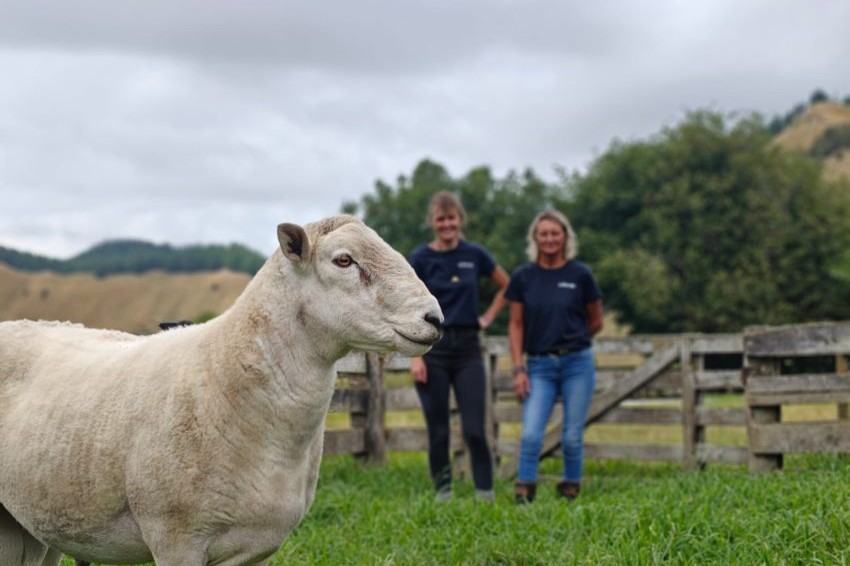Soaring residential house prices has seen renewed calls for a capital gains tax. But as Phil Edmonds reports, farmers may have little to fear.
Rather than drifting towards the end last year in post-election glory, the new Labour Government was confronted with having to fight a revived pesky nemesis – runaway house price inflation.
Given its limitless media appeal, advice was thrown at the government from all corners. This included fresh calls to tax capital gains. Not being at the centre of the problem – in many ways far from it – farmers have been able to sit back and watch the debate unfold from afar. But might farmers be better prepared to contribute to what some are now saying is an inevitable change in tax policy?
After Prime Minister Jacinda Ardern categorically ruled out introducing a capital gains tax following the public reaction to proposals that emerged from the Tax Working Group (TWG) in 2018, there was a sense the matter was buried, and there was little point in discussing it further. It certainly drifted off the media’s agenda, and even in the lead-up to the election last year no party gained any traction by raising it. The Greens shifted its focus to promoting a wealth tax instead.
That was before house prices started to go nuts. As the boom gathered steam towards the end of 2020 and the prospect of huge, untaxed windfalls became a source of disquiet for those locked out of the property market, talk of taxing capital gains re-emerged.
This was no surprise to some tax experts, who remain convinced the way the New Zealand tax system is configured is unsustainable, and will inevitably have to change, irrespective of political promises. After Ardern crossed out CGT in 2018, one tax consultant at the time suggested CGT was not dead, but merely resting.
Westpac economist Dominic Stephens shared that view in one of the bank’s economic forecasts in November. He said that as the “Government will still be running large deficits mid-decade, and beyond that time, our pick is that a future government will introduce some form of tax on assets, such as a land tax, capital gains tax or a wealth tax. Societal concern about increasing wealth inequality is only going to intensify, eventually creating a large constituency for such a change.”
Some commentators remain convinced there is no chance of this happening with so much vested interest among those who own property assets, and who still constitute the largest voting bloc. However, population data shows millennials – broadly those who are relatively unwealthy, and the losers of escalating property prices – will become the biggest voting bloc by 2030, and the years approaching this will inevitably lead to a change in thinking.
Given that, new taxes could well become a question of when, not if.
Of the options available, CGT is still top of everyone’s mind, partly because NZ is the only country in the OECD that does not have such a tax. As a result, there are regular appeals for NZ to simply join the rest of the world.
It’s not, however, as simple as a copy-paste exercise. A closer look at CGT in other jurisdictions show a myriad of nuance in how it is applied, with rafts of exemptions and discounts.
In many ways its unwieldy administration made it easy to reject nearly two years ago. Some of the proposed features that contributed to that included:
- The requirement of all qualifying assets to be valued on a certain date. This would have been a valuer’s dream (if there were anywhere near enough valuers in NZ to do the dreaming) but a public administrator’s nightmare. The government rejected an option to only include asset sales after the rule was introduced, as Australia did in 1986, because it would have taken a long time to change the shape of the overall tax burden and would have raised very little revenue in the immediate future.
- No discount for inflation, as is made in other countries. This meant assets that did not make any real gain value would still be taxed. Again, the reason for this was because taxing inflation-adjusted values would produce significantly less revenue.
Exempting the family home (including family home on a farm). While this was always going to be a feature, the reasons were political rather than based on tax efficiency. The experience of exempting family homes in Australia has simply encouraged more frequent buying and selling as people engage in ‘castle building’.
Otago University tax policy lecturer Andrew Coleman says despite the government attempt to minimise exemptions, the modest level of revenue the proposed CGT was going to generate means it has arguably been overhyped in terms of its ability to solve the problems with the tax system the TWG initially set out to fix.
Coleman says it would still be worth introducing to bring NZ in line with other countries, but to make it effective, it should be applied each year as land values go up – on an accrual basis rather than on a realisation basis.
What are the implications for farmers of a revived CGT? Should it be feared?
First, the reaction among prominent farming voices when the TWG Working Group revealed its recommendations in 2018 were conclusively negative on the proposition to introduce a capital gains tax. Federated Farmers’ then vice-president Andrew Hoggard labelled the CGT proposal a ‘mangy dog’, that would add unacceptably high costs and complexity.
This was to some extent countered by PwC partner and member of the Tax Working Group Geof Nightingale, who said very few of the specific CGT recommendations would have affected farmers in the short-term.
So are farmers right to continue fearing a capital gains tax as much as other land asset holders?
While no ardent fan of CGT, Manawatu-based rural accountant Michael Lawrence suggests farmers should not be terrified – at least based on its introduction being a means to stifle the rampant property market.
Lawrence says farmland is not typically subject to speculation (most people buy farms for long-term ownership), and that the focus of farm ownership is now more likely to be for business profitability rather than accumulation of capital gain.
“If you look back two decades at the trajectory of dairy land prices, you would have seen a massive increase in prices in the five years to 2010, but prices now are probably no dearer than they were in 2010, if you remove inflation. So there probably hasn’t been much speculation in dairying over the last decade.
“For sheep and beef farmers, there may have been some recent movement with the forestry incentive where farmers have sold to foresters and have then spent that money on cheaper dairy land, but this is not really speculation that compares with what has gone on in the residential property market.”
‘The majority of farmers are located some distance away from urban centres, and therefore won’t be subject to sharp increases in capital gain. In terms of the overall percentage of farmland, it would be small.’
Lawrence says a slight exception might be some people who have speculated on farms close to urban centres with a view to convert them to housing or lifestyle blocks. But land use change for this purpose is more likely to have been a result of existing farmers getting to a point where the land has a premium value over farming value.
“The majority of farmers are located some distance away from urban centres, and therefore won’t be subject to sharp increases in capital gain. In terms of the overall percentage of farmland, it would be small.”
The other reason why farmers have less to lose from a CGT is that they have had to become more focused on income than capital gain in terms of their farming proposition. Lawrence says “farmers haven’t quite put capital gain to bed, but income is far more important. For quite a long time, capital gain would have dominated farmers’ minds, but over the last decade there is much more emphasis on producing income, if only for banks increasingly wanting to see the principal of loans paid off.”
Lawrence’s overriding view is that CGT is an unnecessary worry for farmers if its imposition is designed to address land speculation.
Otago-based rural sector tax advisor Tony Marshall says there are ways a CGT could be implemented that would negate the deep-rooted hostility – such as making it apply to everything but at a very low (5%) rate. This might end up being twice the rate of commission you’d pay to a real estate agent to sell your house – something people should be able to live with.
However, he says if the government were to pursue a CGT along the lines of the TWG recommendations, there are reasons why farmers might feel disproportionately targeted, particularly when trying to develop family succession plans. If no roll-over relief is given (as it is in some other jurisdictions – see Canada and Ireland), then it could make it harder to retain farms within families.
As was evident when the TWG recommendations were operationalised by the government to provide a practical case for implementation in the last term of government, lobbying for exemptions took on a heightened level of importance. Given the complicated and idiosyncratic way CGT has been applied in other countries, that is likely to continue being the case if discussions continue.
If CGT does elude the bravest politicians, it doesn’t mean taxing capital gains is dead though – if nothing else than for the demographic reasons identified above. So in an effort to get ahead of the predicted tipping point, what might farmers pay lip service to, if some kind of tax on capital gain is inevitable?
Andrew Coleman suggests an urban land tax is a potential alternative to CGT. And despite wholesale opposition to land taxes to date, it might be one farmers could happily live with.
Blanket land taxes have so far been dismissed as a blunt tool but Coleman says a distinct urban land tax would make sense.
“One of the problems with taxing rural land is that a lot of the land value reflects the value added by farmers themselves (fencing, drainage, improving pastures and so on). You might want to tax the income that arises from the value added to the land, but not necessarily to the land itself. By contrast, most of the added value to urban land is derived from what other people do – councils creating new amenities, improvements that neighbours make to the neighbourhood.
“This land represents a much better tax opportunity as the value does not reflect anything that individual landowners are doing. They may well be adding value to a house, but not the land component.”
- It might sound far-fetched, but we’ve entered an era where far-fetched is becoming yesterday’s plausible. Even, possibly, for tax policy.
Capital gains tax on farms in other countries
Australia
Capital gains tax – same as marginal personal income tax rate.
Some discounts and concessions apply for individuals who sell all or part of their farmland. If your home is part of the working farm, you may be eligible for a partial main residence exemption. You may also be exempt if you are over 55, are either retiring or permanently incapacitated, and have owned a working farm for more than 15 years. If you are a retiring small business owner selling your business (including farms) you may also seek exemption from CGT – in recognition that small business owners, unlike employees, are likely to have far less retirement savings. To address this imbalance, farmers may be eligible to disregard up to $500,000 of the capital gain on the sale of a farm.
Ireland
Capital Gains Tax – 33%.
Principal private residence and surrounding gardens etc is exempt from CGT, but any ‘development value’ is liable (for example, if part of the land is sold off). Retirement relief from CGT is available where an individual, who is at least 55 years of age, disposes of an asset (farm business, for example) and they have owned it for at least 10 years. Full relief may also be claimed by an individual aged 55 – 65 years of age on the disposal if the whole or part of the qualifying assets are transferred to their child.
Canada
Capital Gains Tax– half of a capital gain constitutes a taxable capital gain – taxed at ordinary personal income tax rate.
Farmers may be able to take advantage of the lifetime capital gain exemption. The farm must have been used principally (more than 50%) for the business of farming by an individual or family. Sale of a farming business that includes your principal residence (typically 0.5 hectare) will generate partial CGT exemption. There are also significant opportunities for tax savings from transferring farms within families.





